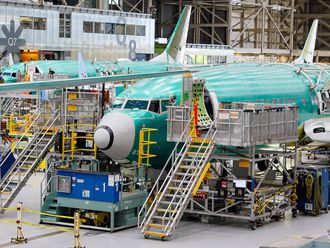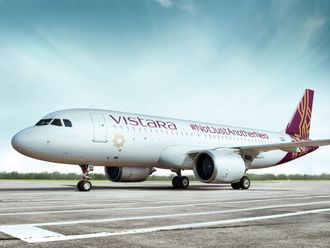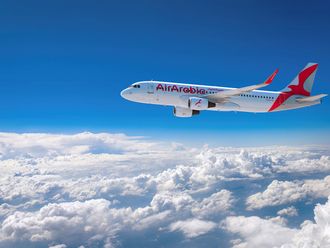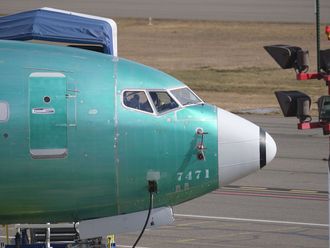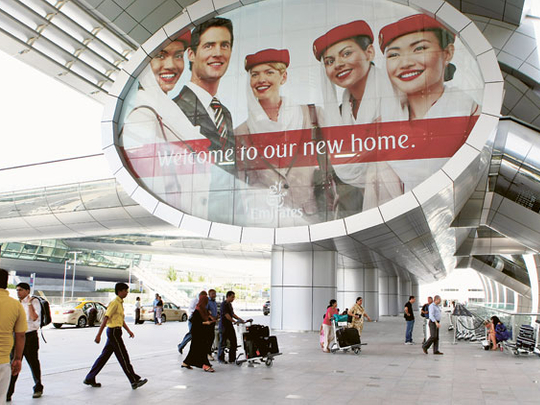
Dubai: As air travel grows steadily in the Middle East and aircraft orders by Gulf carriers surge, the region's commercial aviation sector is set for annual growth of 10 per cent for years to come, according to a new study.
In its combined analysis of Middle East and India aviation markets, Official Airline Guide (OAG) — the UK-based aviation research firm providing global aviation intelligence data — reveals that the Middle East, along with India, will account for 11 per cent of the world's aircraft deliveries over the next decade.
Tthis growth in the two markets will be supported by a steady increase in inbound tourism, massive airport development and investor confidence in this sector, with India set to grow annually at 9 per cent over the next several years.
Supporting OAG's study are positive growth numbers for Middle East aviation by the aviation trade body the International Air Transport Association.
"The story for this region is growth. In 2004, Mena [Middle East and North Africa] carriers accounted for less than 7 per cent of international traffic. Today it is over 11 per cent," said Tony Tyler, IATA's Director General and CEO, while speaking at a recent Arab Air Carriers Organisation meeting in Abu Dhabi. He added that the double-digit growth trend by the region's carriers over the last few years fuelled such an expansion.
Expectations
The Middle East carriers added 8.8 per cent to capacity while demand grew by 8 per cent in the first ten months of 2011, according to IATA.
"And the expectations for the future of Mena region are bright," Tyler said, adding that it was evident with aircraft orders topping $60 billion (Dh220.2 billion) at the recent Dubai Airshow.
"And the region is preparing well with $100 billion in airport infrastructure investments," he added.
Emphasising similar trends is OAG's study, which states that airlines, airports and air traffic control in the Middle East will have to successfully serve more than four times the 120 million passengers served this year, though the existing aviation systems do not fulfil current demand.
"In the Middle East, markets such as Dubai have set the stage for reforming their aviation systems, and the region has demonstrated its ability to develop world-class aviation players.
"However, the region's slow rate of liberalisation and uncoordinated regional competition for passengers are barriers to continued reforms," said Mario Hardy, Vice-President — Asia Pacific, UBM Aviation — OAG's parent company. Quality and efficiency levels of aviation systems in many Middle East countries are "well below" international markets such as those of Europe and Asia, according to OAG's analysis.
Further drawing a parallel with India's aviation sector, Hardy said that though India today is among the world's most promising aviation markets, it is "not without risk" as there is significant progress yet to be made in airport modernisation, aircraft maintenance, pilot training and air cargo services.
"It remains to be seen whether the Indian aviation industry can handle the region's relentless growth, with its Middle Eastern, oil-rich neighbours all too keen to take on more capacity," Hardy said.


